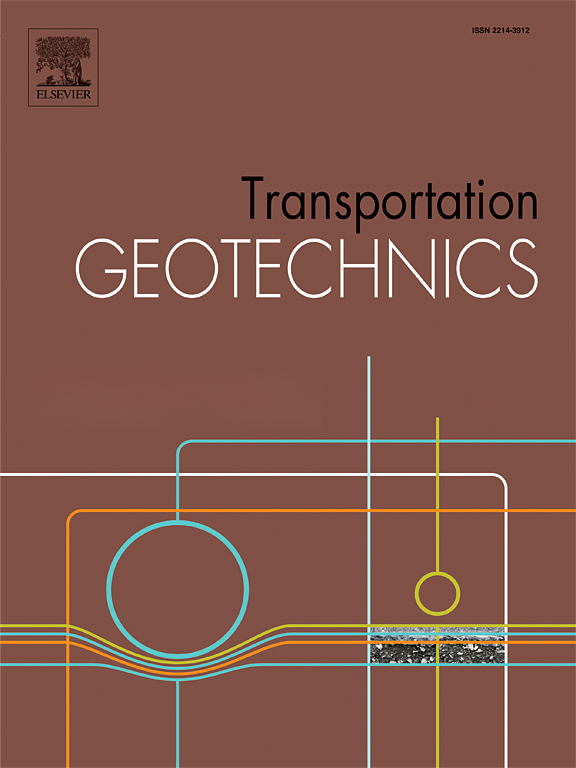Dynamic characteristics and impact load properties of high-speed railway piers under debris flow impact
IF 5.5
2区 工程技术
Q1 ENGINEERING, CIVIL
引用次数: 0
Abstract
Debris flows, comprising slurry and boulders, pose significant threats to high-speed railway bridges in debris flow-prone regions due to their rapid and unsteady nature. However, research on the dynamic characteristics of high-speed railway bridges under the impact of debris flows remains limited. This study develops a refined numerical model to analyze the impact of debris flow slurry and boulders on high-speed railway piers, utilizing the Smoothed Particle Hydrodynamics (SPH) and Finite Element Method (FEM) coupling method. The model's validity is confirmed by comparing it to experimental data from existing research. The research applies the validated model to examine the dynamic response characteristics of high-speed railway piers of varying heights when subjected to impacts from slurry and boulders. In addition, it proposes simplified load models for these impacts, incorporating corrections to current code formulas. The results indicated that piers of specific types experience varying levels of damage from boulder impacts, with the existing code formulas underestimating peak impact forces. For slurry impacts, the code formulas underestimate peak impact forces, with actual values under low flow depths reaching up to twice the value predicted by the formulas.
泥石流冲击下高速铁路桥墩动力特性及冲击荷载特性
泥石流由泥浆和巨石组成,由于其快速和不稳定的特性,对泥石流易发区的高速铁路桥梁构成了重大威胁。然而,高速铁路桥梁在泥石流作用下的动力特性研究仍然有限。本文利用光滑颗粒流体力学(SPH)和有限元法(FEM)耦合方法,建立了一种精细化的数值模型,用于分析高速铁路桥墩受到泥石流浆体和砾石的影响。通过与已有研究的实验数据对比,验证了模型的有效性。将该模型应用于高速铁路不同高度桥墩在浆体和抱石冲击作用下的动力响应特性研究。此外,它还为这些影响提出了简化的负荷模型,并对当前的代码公式进行了修正。结果表明,不同类型的桥墩受到不同程度的冲击损伤,现有的规范公式低估了峰值冲击力。对于泥浆冲击,规范公式低估了峰值冲击力,低流深下的实际值可达公式预测值的两倍。
本文章由计算机程序翻译,如有差异,请以英文原文为准。
求助全文
约1分钟内获得全文
求助全文
来源期刊

Transportation Geotechnics
Social Sciences-Transportation
CiteScore
8.10
自引率
11.30%
发文量
194
审稿时长
51 days
期刊介绍:
Transportation Geotechnics is a journal dedicated to publishing high-quality, theoretical, and applied papers that cover all facets of geotechnics for transportation infrastructure such as roads, highways, railways, underground railways, airfields, and waterways. The journal places a special emphasis on case studies that present original work relevant to the sustainable construction of transportation infrastructure. The scope of topics it addresses includes the geotechnical properties of geomaterials for sustainable and rational design and construction, the behavior of compacted and stabilized geomaterials, the use of geosynthetics and reinforcement in constructed layers and interlayers, ground improvement and slope stability for transportation infrastructures, compaction technology and management, maintenance technology, the impact of climate, embankments for highways and high-speed trains, transition zones, dredging, underwater geotechnics for infrastructure purposes, and the modeling of multi-layered structures and supporting ground under dynamic and repeated loads.
 求助内容:
求助内容: 应助结果提醒方式:
应助结果提醒方式:


